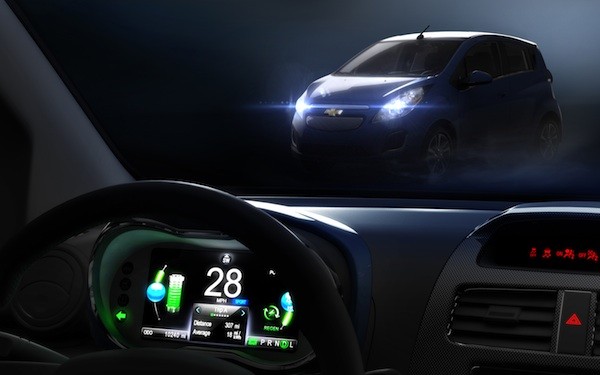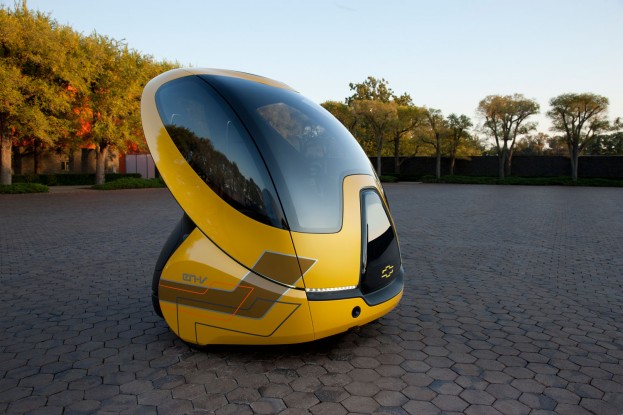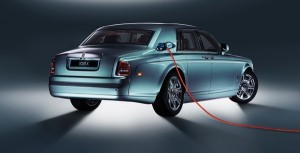Chevrolet says it will build an electric version of its Spark mini car and sell the vehicle in countries around the world, including select markets in the U.S and Watertown-based battery manufacturer A123 Systems will power the Chevrolet Spark EV. GM unveiled its EN-V (Electric Networked-Vehicle) concept in three flavors conceived by design teams around the world and ib an effort to ascertain the real-world practicality of the two-seat, electric urban mobility concept, GM has begun work on the next-generation EN-V concept vehicle which the company plans to test in pilot demonstration programs in megacities around the world. The new vehicle and future EN-V concepts will also now be part of the Chevrolet brand and carry a Chevrolet badge……………..
Chevrolet announced it will produce an all-electric version of the Chevrolet Spark mini-car – the Spark EV. It will be sold in limited quantities in select U.S. and global markets starting in 2013, including California. “The Spark EV offers customers living in urban areas who have predictable driving patterns or short commutes an all-electric option,” said Jim Federico, global vehicle chief engineer for electric vehicles at Chevrolet. “It complements Chevrolet’s growing range of electrified vehicles, including the Volt extended-range EV and the 2013 Malibu Eco with eAssist technology.” Feedback from participants in Chevrolet’s electric vehicle demonstration fleets in Shanghai (Sail EV), Korea (Cruze EV) and India (Beat EV) are being incorporated into the Spark EV. “Our global demo fleets continue to provide insight into the needs of electric vehicle customers living in urban environments,” said Federico. “The Spark EV is another step in Chevrolet’s plan to provide customers with a variety of electrification solutions to address the lifestyle and transportation needs of people around the world.” A123 Systems will supply the advanced nanophosphate lithium-ion battery packs that will power the Spark EV. Work on the next-generation EN-V concept vehicle, representing General Motors’ vision to meet the growing demand for safe, connected, zero-emissions personal transportation could participate in pilot demonstration programs in megacities around the world to determine real-world practicality.In addition, future EN-V concepts will carry a Chevrolet badge, Chris Perry, vice president, global Chevrolet marketing and strategy, told media on Wednesday in advance of Chevrolet’s Nov. 3 Centennial celebration.
“For 100 years, the Chevrolet brand has been focused on making advanced technology that improves customers’ lives accessible and affordable, and the Chevrolet EN-V will continue that tradition,” said Perry. “By 2030, more than 60 percent of the world’s 8 billion people will live in urban areas,” said Perry. “The Chevrolet EN-V represents a possible solution for global customers living in markets where alternative transportation solutions are needed.” The award-winning Chevrolet EN-V, short for Electric Networked-Vehicle, is a two-seat, electric urban mobility concept that maintains the basic principle of personal mobility – freedom. One of the stars of the 2010 Shanghai World Expo, EN-V was designed to address environmental issues and help alleviate traffic congestion, parking, safety concerns and energy consumption. In April, GM and the Sino-Singapore Tianjin Eco-City Investment and Development Co. Ltd. (SSTEC) signed a memorandum of understanding to collaborate on integrating the next-generation EN-V into the Tianjin Eco-City from a power, communications and physical infrastructure perspective. The EN-V is a zero-emissions vehicle powered by lithium-ion batteries. Recharging from a conventional wall outlet using standard household power allows EN-V to travel at least 40 kilometers on a single charge, an acceptable range for most urban trips. By combining GPS with vehicle-to-vehicle communications and distance-sensing technologies, the EN-V can be driven manually or autonomously. In autonomous mode, EN-V offers mobility to people who may not otherwise operate a vehicle. By leveraging wireless communications, it allows drivers and occupants to communicate hands-free with friends or business associates while on the go. The ability to communicate with other vehicles and with the infrastructure could help EN-V significantly reduce the number of vehicle crashes and make it easier to find available parking spaces. It could also reduce traffic congestion by automatically selecting the fastest route based on real-time traffic information.
[ttjad keyword=”auto”]




